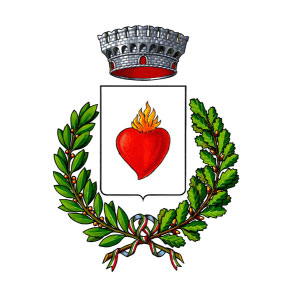

Its name derives from a round valley that opens at its feet and by hiking in nature you can observe Partridges, Quails, Codirossoni, Calandri, Partridges and Falconids in the mountains while you can meet wild boars, bears, wolves and chamois especially at the Sunrise.
The whole area was inhabited since the Roman period, and some tombs and the ancient Roman bridge of the Arco della Annunziata that crossed the Rapido river joining the south to the Cassino area are evidence of this.
The village was formed in the Middle Ages when the populations of the valley sought refuge in fortresses placed on heights to defend themselves from the invasions of the Saracens who came from Venafro.
Vallerotonda was part of the castles placed to protect the Terre di San Benedetto and the whole history of this village is intertwined with that of the monastery and is mentioned for the first time in the diploma of Pope Victor II of the year 1057.
Its fortress seems to have been reinforced by Abbot Gerardo (1111-1123) in charge of creating a protection network around the Monastery.
The main activity of the population has always been pastoralism and marginal agriculture that still today offers excellence. The small history of Vallerotonda can be gleaned from the reports of the pastoral visits of the abbots in the area.
Vallerotonda gravity still within the Kingdoms of Naples and the south and in 1349 the village was razed to the ground by a terrible earthquake that also destroyed part of Molise and Abruzzo.
In 1436, this whole area of Southern Lazio was the battlefield between Angevins and Aragonese (French and Spanish) for the conquest of the Kingdom of Naples.
In 1656 the population of Vallerotonda was then decimated by a terrible plague.
In the last two centuries it has suffered further looting and devastation: in 1799 by French troops and in 1915 it was damaged by the great Marsica earthquake.
The Cardito hamlet of Vallerotonda was the refuge of the brigand Domenico Coja called Centrillo, whose story begins in the Bourbon army and continues in the pro-Bourbon and anti-unification revolt. The phenomenon of banditry was strongly felt by the local population and for this reason it lasted longer than in the rest of Italy.
During the Second World War, Vallerotonda is located along the Gustav defense line of the Germans and the proximity to the Abbey led to the almost complete destruction of the village during the terrible bombings.
German and Moroccan troops fought in the woods and in the Collelungo forest you can find a suggestive sculpture by the artist Mastroianni in memory of a massacre of the population in 1943.
The destruction of the country then led to a strong emigration of the inhabitants after the war.
Vallerotanda was known for the construction of bagpipes and fifes.









Follow us